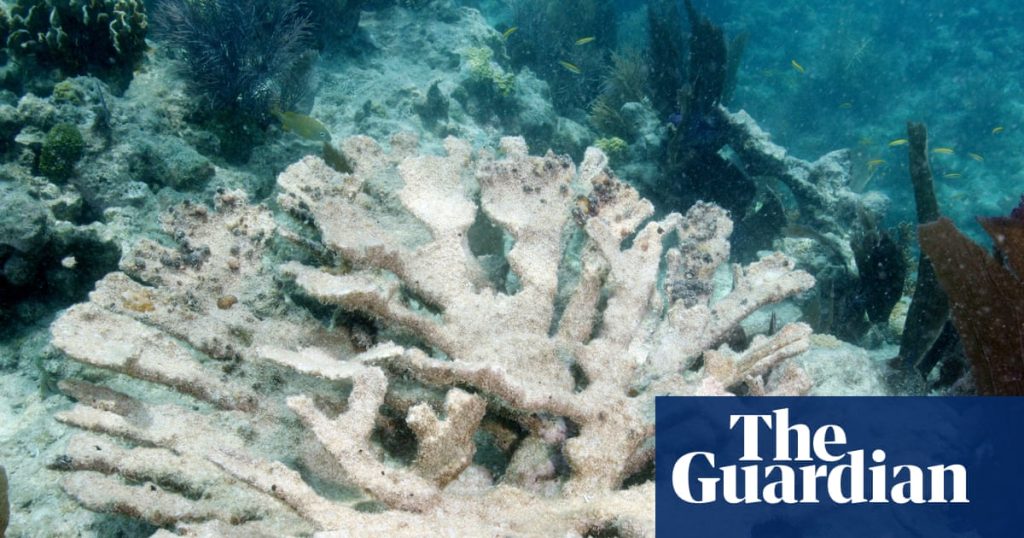Two of the most important coral species that made up Florida’s reef are now functionally extinct after a withering ocean heatwave caused catastrophic losses, scientists have found.
The near-total collapse of the corals that once formed the backbone of reefs in Florida and the Caribbean means they can no longer play their previously crucial role in building and sustaining reef ecosystems that host a variety of marine life.
This “functional extinction” is a stage before global extinction, a threat that now looms for many coral species. Scientists this month warned that a tipping point had been reached whereby corals around the world are set to be wiped out due to global heating, which is raising heat to intolerable levels in our oceans.
“We’re running out of time,” said Ross Cunning, lead author of the new Florida study and a research biologist at Shedd Aquarium. “Extreme heatwaves are increasing in frequency and severity due to climate change, and without immediate, ambitious actions to slow ocean warming and boost coral resilience, we risk the extinction of even more corals from reefs in Florida and around the world.”
The new research, published in the Science journal, analyzed the fate of staghorn (Acropora cervicornis) and elkhorn (Acropora palmata) corals off the Florida coast following a severe marine heatwave in 2023, which raised temperatures on Florida’s fraying coral reefs to their highest levels in over 150 years.
The two species are complex, reef-building corals and are named because they resemble, respectively, the antlers of stags and elks. However, researchers who conducted diver surveys of more than 52,000 colonies of the species, across 391 sites along Florida’s coast, found widespread, often devastating, losses.
Along the Florida Keys, mortality rates reached 98% and even 100%, revealing a complete annihilation of the corals. In south-east Florida, where temperatures have been cooler, mortality rates were lower, at about 38%.
The two Acropora species had already suffered from decades of localized impacts in Florida, such as poor water quality coming from pollutants that wash off the land, as well as disease. But the 2023 heatwave has proved fatal for these heat-sensitive species.
The 2023 event caused the ninth episode of bleaching on the Florida reef – a process whereby corals become heat-stressed and expel the symbiotic algae living in their tissues, causing them to become ghostly white. If temperatures remain elevated, the corals die off completely.
Globally, coral reefs are among the ecosystems most vulnerable to the human-caused climate crisis. This poses a major threat to a quarter of all ocean life that relies upon what are essentially the rainforests of the sea, as well as hundreds of millions of people who depend upon corals to support fish that they can consume and gain an income from.
Corals also act as a barrier to protect our shorelines from powerful storms, which are themselves being worsened by rising global temperatures.
In a desperate attempt to prevent a death spiral of threatened corals, scientists have established repositories of Acropora in aquariums and offshore coral nurseries. Attempts have been made to reseed corals on reefs in Florida, too, in an effort to regain some of the 90% of coral cover lost off the state in the past four decades.
But as global heating continues to escalate, there is little hope of long-term survival of these species without major interventions, researchers warn.
“Elkhorn corals, in particular, are some of the most important wave-breaking coral species in the region”, said Andrew Baker, a marine biologist at the University of Miami and another study co-author.
“They used to be common on shallow reef crests in the Caribbean, and if we want our reefs to continue protecting our coastlines from flooding during storms, its worth taking extraordinary measures to ensure we don’t lose these corals altogether”.

